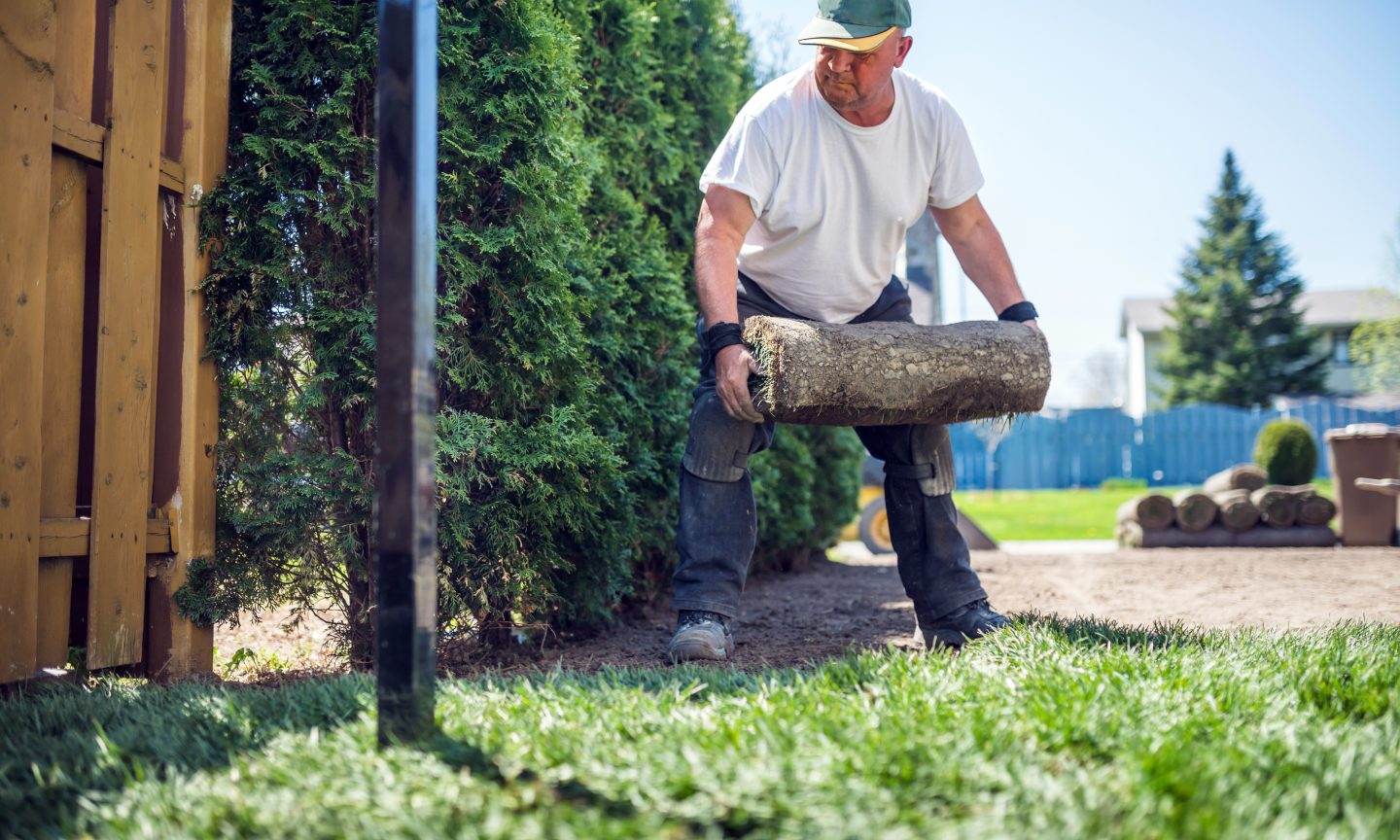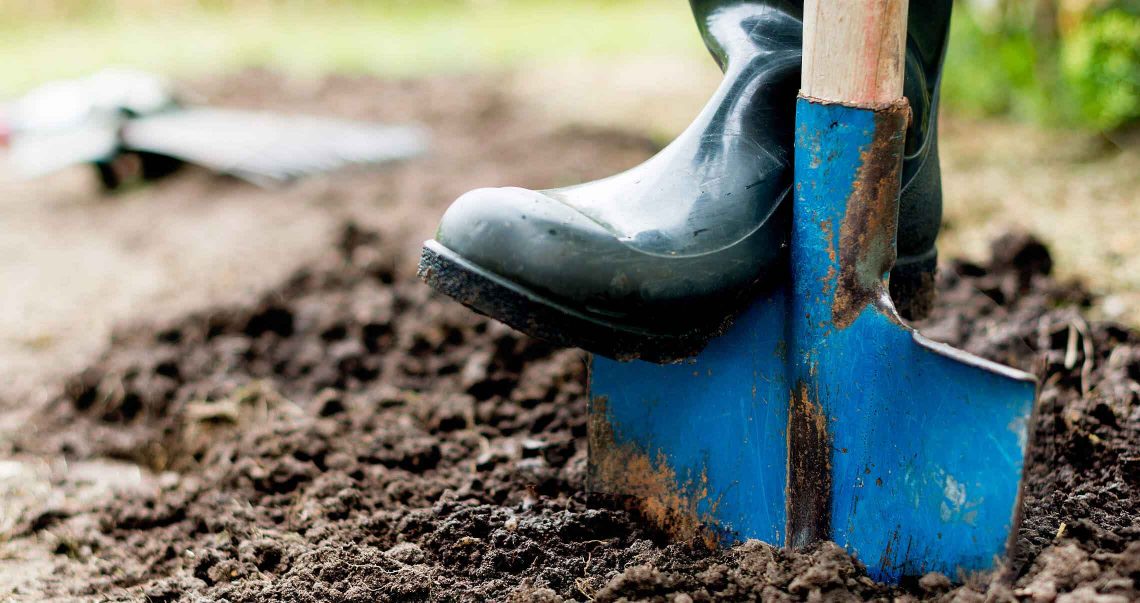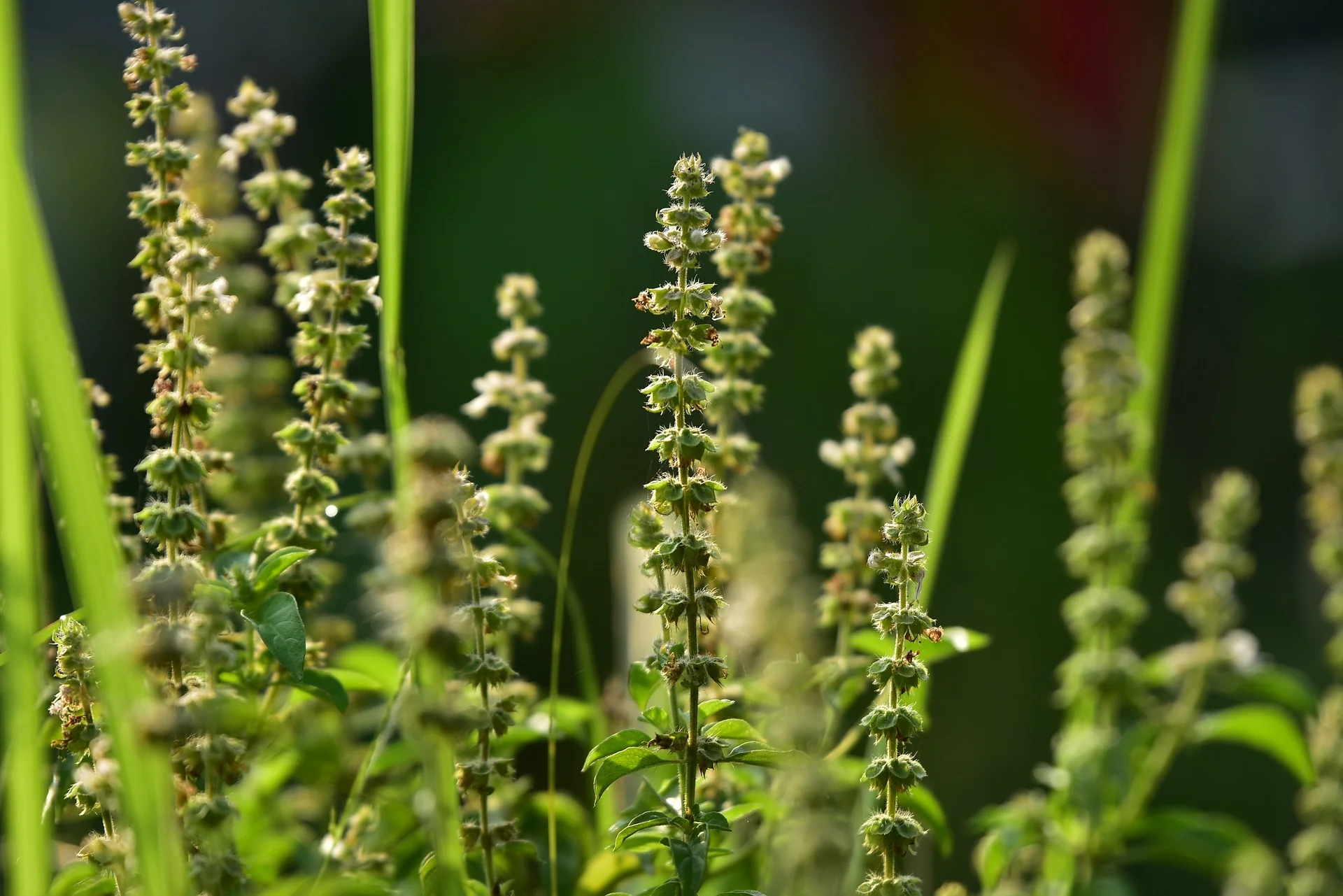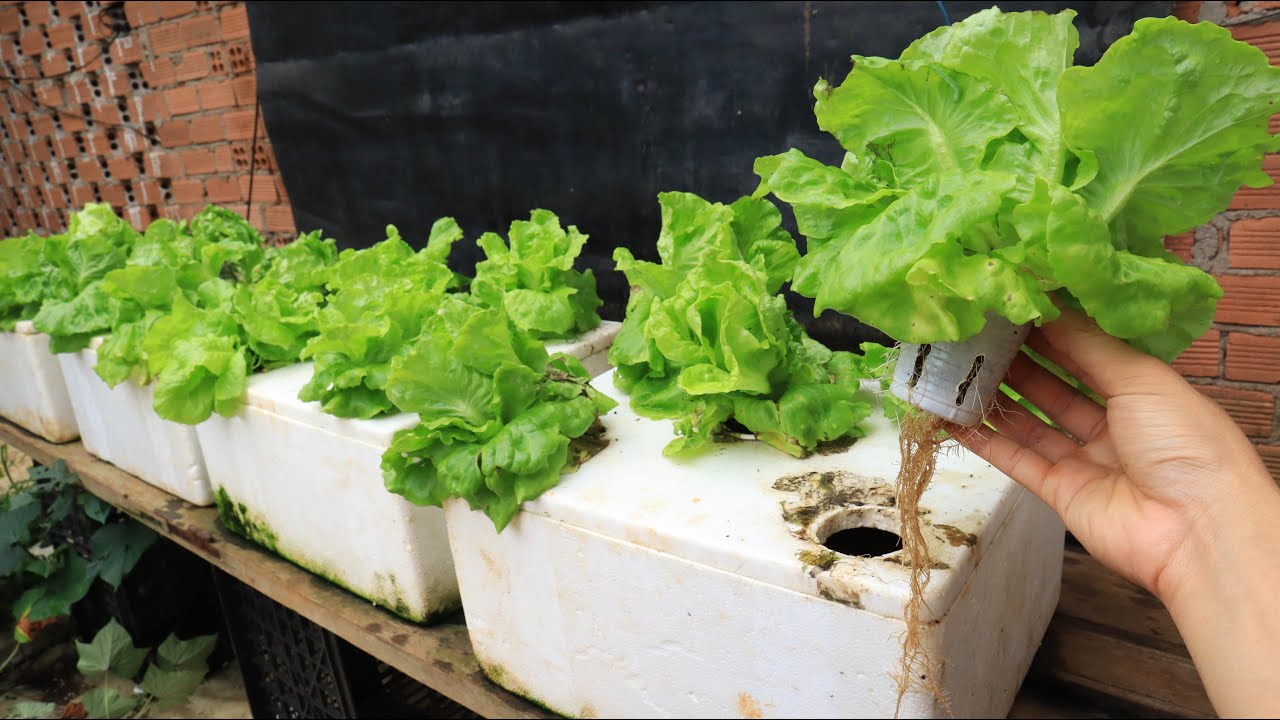Home>Gardening Tips and Tricks>How To Start A Greenhouse Business
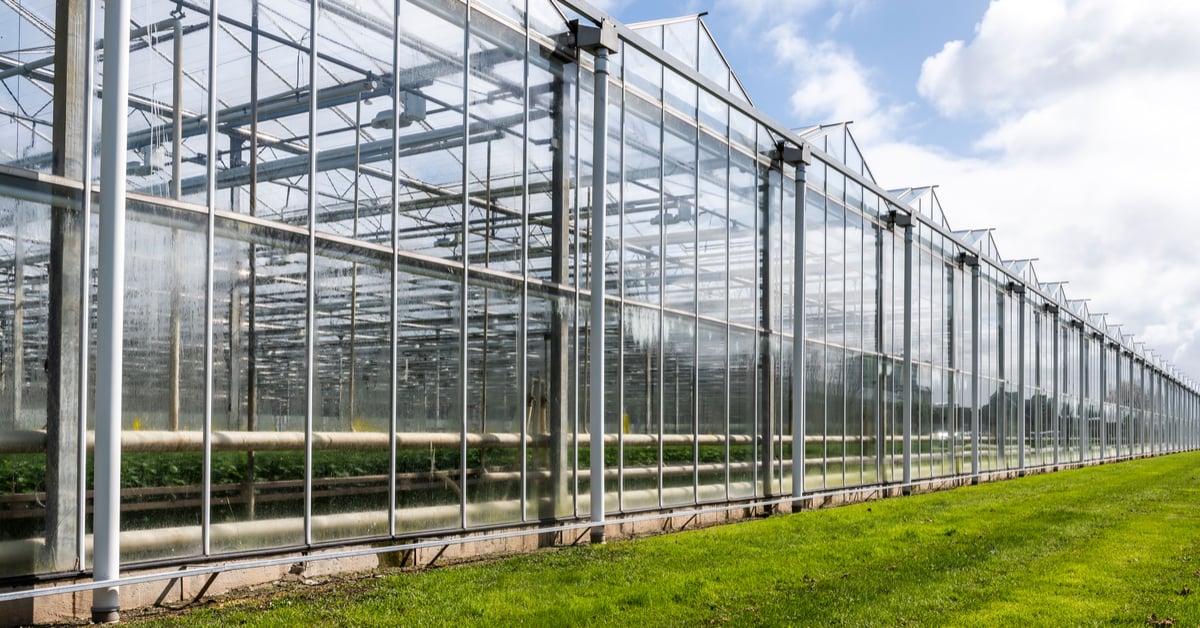

Gardening Tips and Tricks
How To Start A Greenhouse Business
Modified: January 22, 2024
Discover the secrets to starting a successful greenhouse business with our problem-solving guide. Equip yourself with the knowledge and tools needed to overcome challenges and thrive in this lucrative industry.
(Many of the links in this article redirect to a specific reviewed product. Your purchase of these products through affiliate links helps to generate commission for Chicagolandgardening.com, at no extra cost. Learn more)
Table of Contents
- Introduction
- Step 1: Research and Planning
- Step 2: Securing Funding and Land
- Step 3: Choosing the Right Greenhouse Design
- Step 4: Obtaining Necessary Permits and Licenses
- Step 5: Setting Up Infrastructure and Equipment
- Step 6: Selecting and Cultivating Plants
- Step 7: Managing Pests and Diseases
- Step 8: Implementing Proper Watering and Fertilization Techniques
- Step 9: Marketing and Selling Your Products
- Step 10: Monitoring and Adjusting Operations for Success
- Conclusion
Introduction
Welcome to the world of greenhouse gardening! Starting a greenhouse business can be an exciting and fulfilling venture for those with a passion for plants and a desire to contribute to a greener future. Whether you are interested in growing flowers, herbs, vegetables, or even exotic plants, a greenhouse provides the perfect environment to nurture and cultivate your crops.
Greenhouses offer numerous advantages over traditional outdoor gardening. They provide a controlled environment, shielding plants from extreme weather conditions and allowing for year-round cultivation. With advancements in technology, modern greenhouses can be equipped with automated systems for temperature, humidity, and irrigation, making plant care more efficient and convenient.
In this article, we will guide you through the essential steps to start your own greenhouse business. From initial research and planning to marketing and selling your products, we will cover the key aspects necessary for success. So, let’s dive in and explore the journey of establishing and running a greenhouse business!
Step 1: Research and Planning
Before diving into the world of greenhouse gardening, it is crucial to conduct thorough research and develop a comprehensive business plan. This step will lay the foundation for a successful venture and help you make informed decisions along the way.
Start by identifying your target market. Determine whether you want to focus on selling to local customers, supplying to wholesalers, or even considering online sales. Understanding your target market will help you tailor your product offerings and marketing strategies accordingly.
Next, research the demand for various plants in your area. Identify popular crops that have a high demand and are suitable for cultivation in a greenhouse. Consider factors such as seasonal trends, local climate conditions, and consumer preferences. This research will help you choose the right plants to grow and maximize your profitability.
Additionally, it is essential to study the requirements and challenges of greenhouse gardening. Familiarize yourself with the different greenhouse systems, the equipment needed, and the techniques for maintaining optimal growing conditions. This knowledge will help you design an efficient and productive greenhouse setup.
Another important aspect of your research is understanding the financial implications of starting and operating a greenhouse business. Calculate the initial investment required for land, infrastructure, equipment, and crop supplies. Consider ongoing costs such as utilities, employee wages, and marketing expenses. Conducting a thorough financial analysis will give you a clear understanding of the profitability and sustainability of your venture.
A well-developed business plan is the key to success in any entrepreneurial endeavor. Outline your goals, target market, competitive analysis, marketing strategies, and financial projections. A comprehensive business plan will serve as a roadmap and help you stay focused on your objectives.
Remember, research and planning are ongoing processes. Stay updated on the latest industry trends, technological advancements, and market demands. Continuously evaluate your business plan and adapt as needed to ensure your greenhouse business thrives in a dynamic and competitive market.
Step 2: Securing Funding and Land
Once you have completed the research and planning phase, the next step is to secure the necessary funding and find suitable land for your greenhouse business. Adequate financial resources and the right location are crucial elements for establishing a successful operation.
Start by assessing your financial needs. Determine the total investment required to set up and initially operate your greenhouse. This includes purchasing or leasing the land, constructing and equipping the greenhouse structure, acquiring necessary permits and licenses, and obtaining the initial stock of plants and supplies.
There are several options for funding your greenhouse business. You may consider self-funding if you have sufficient personal savings. Alternatively, explore traditional financing options such as bank loans or seek out investors who are interested in supporting your venture. It is important to prepare a clear and convincing business plan to demonstrate the potential profitability and return on investment.
Once you have secured the necessary funding, the next step is to find the right location for your greenhouse. Look for land that is suitable for agricultural use and has access to necessary utilities such as water and electricity. Consider factors such as proximity to your target market, transportation infrastructure, and local zoning regulations.
If you already own land, evaluate whether it is suitable for greenhouse construction. Consider factors such as soil fertility, orientation to natural light, and proximity to potential sources of pests and diseases. If necessary, consult with experts such as agricultural extension agents or greenhouse consultants to assess the suitability of your land.
If you do not own land, explore options for leasing or purchasing. Contact local agricultural agencies, landowners, or real estate agents who specialize in agricultural properties. Visit potential locations and assess their suitability based on your specific needs and requirements.
When considering the land, also evaluate the possibility of expansion. As your greenhouse business grows, you may need additional space to accommodate increased production. Planning for future expansion will save you time and efforts in the long run.
Securing funding and finding suitable land are critical steps in establishing your greenhouse business. Take the time to carefully evaluate your financial needs and explore financing options. Additionally, thoroughly research and assess potential land options to ensure the success and sustainability of your operations.
Step 3: Choosing the Right Greenhouse Design
Choosing the right greenhouse design is pivotal to the success of your greenhouse business. The design you select will determine various factors such as energy efficiency, crop productivity, and overall functionality. Consider the following factors when making your decision.
1. Size and Layout: Determine the size of the greenhouse based on your production needs, available space, and budget. Consider the layout that best suits your workflow, ensuring efficient movement of plants, equipment, and personnel.
2. Material and Construction: Greenhouses are typically constructed using materials like glass, polycarbonate, or polyethylene. Each material has its advantages and disadvantages in terms of light transmission, insulation, durability, and cost. Choose a material that aligns with your budget, location, and climate.
3. Climate Control: Evaluate the climate control systems available for the greenhouse design. Consider factors such as heating, cooling, ventilation, and humidity control based on your geographic location and type of crops you plan to cultivate.
4. Lighting: Assess the natural light availability in your area and the need for supplemental lighting, especially during darker months. Choose a greenhouse design that maximizes natural light transmission or allows for efficient installation of artificial lighting systems.
5. Accessibility and Safety: Ensure the greenhouse design includes features such as wide doors, proper walkways, and wheelchair accessibility. Consider safety measures like fire extinguishers, emergency exits, and proper electrical wiring.
6. Energy Efficiency: Look for greenhouse designs that prioritize energy efficiency. Features such as insulation, double-layered walls, and energy-saving equipment can help reduce energy consumption and operational costs.
7. Expansion Potential: Consider the potential for future expansion and the ability to add on additional greenhouse structures. This will allow you to grow your business as demand increases.
8. Cost: Assess the initial cost, maintenance requirements, and long-term ROI of each greenhouse design option. Compare the benefits and drawbacks of different designs to make an informed decision that aligns with your budget.
Consult with greenhouse experts or reputable greenhouse manufacturers to help you choose the right design. They can provide valuable insights based on their experience and knowledge of the industry. Visit existing greenhouse facilities to see different designs in action and determine what would work best for your specific needs.
Remember, the greenhouse design you choose will impact the productivity, efficiency, and overall success of your business. Take the time to thoroughly evaluate your options and select a design that aligns with your goals and resources.
Step 4: Obtaining Necessary Permits and Licenses
Before you can start operating your greenhouse business, it is important to obtain the necessary permits and licenses. Compliance with local regulations and requirements is crucial to ensure that your business operates legally and without any interruptions. Here are the key steps to obtaining the necessary permits and licenses.
1. Research Local Regulations: Start by researching the specific permits and licenses required for operating a greenhouse business in your area. Contact your local government offices, such as the planning department or agricultural department, to understand the regulations and requirements.
2. Prepare Documentation: Once you understand the permits and licenses needed, prepare the necessary documentation. This may include business registration, proof of land ownership or lease agreement, financial statements, and any other supporting documents required by the relevant authorities.
3. Submit Applications: Complete the application forms for each permit and license and submit them to the respective government agencies. Ensure that you provide all the requested information and documentation accurately and in a timely manner.
4. Site Inspections: Depending on the nature of your greenhouse business, local authorities may conduct site inspections to ensure compliance with safety and environmental regulations. Prepare your greenhouse facility for these inspections by addressing any potential concerns or deficiencies.
5. Compliance with Environmental Regulations: Greenhouse operations may have certain environmental implications, such as water usage, waste management, and chemical usage. Ensure that you comply with all environmental regulations and guidelines, such as obtaining permits for water extraction or implementing proper waste management practices.
6. Health and Safety Compliance: As an employer, you are responsible for ensuring the health and safety of your employees. Familiarize yourself with local workplace health and safety requirements and implement necessary measures to provide a safe working environment for your staff.
7. Ongoing Renewals and Compliance: Once you have obtained the necessary permits and licenses, be aware of their expiration dates and renewal requirements. Stay informed about any changes in regulations to ensure ongoing compliance with the law.
It is important to note that the permits and licenses required may vary depending on your location and the specific nature of your greenhouse business. It is always recommended to consult with local authorities or seek professional advice to ensure that you are adhering to all applicable regulations.
Obtaining the necessary permits and licenses may require some time and effort, but it is a crucial step in establishing a legitimate and compliant greenhouse business. By following the proper procedures and meeting all regulatory requirements, you can ensure a smooth and hassle-free operation of your business.
Step 5: Setting Up Infrastructure and Equipment
Setting up the right infrastructure and acquiring the necessary equipment is crucial for the smooth operation and success of your greenhouse business. This step involves carefully planning and arranging the physical components needed to create an optimal growing environment for your plants. Here’s what you need to consider:
1. Greenhouse Structure: Select the appropriate greenhouse structure based on your chosen design and crop requirements. This may include a freestanding structure, hoop house, or a custom-built greenhouse. Ensure the structure provides sufficient space, ventilation, and natural light for your plants.
2. Heating and Cooling Systems: Depending on your location and the climate, you may need heating or cooling systems to regulate the temperature inside the greenhouse. Install efficient systems such as heaters, ventilation fans, or evaporative coolers to maintain the ideal temperature range for your plants.
3. Irrigation and Watering Systems: Implement an irrigation system to ensure proper watering for your plants. This may include drip irrigation, sprinklers, or misting systems, depending on your crop’s water needs. Consider water conservation practices and automate the system for convenience.
4. Lighting: Assess the need for supplemental lighting, especially in areas with limited sunlight or during shorter days. Install appropriate artificial lighting systems to provide the necessary light spectrum for optimal plant growth and development.
5. Benches and Shelving: Determine the layout and installation of benches or shelving to optimize space utilization and facilitate easy access to plants. Consider the weight capacity, durability, and ease of cleaning when selecting the appropriate fixtures.
6. Ventilation: Proper airflow is crucial for maintaining a healthy greenhouse environment. Install ventilation systems such as vents, louvers, or exhaust fans to ensure adequate air circulation and prevent the build-up of heat, humidity, and potential pests or diseases.
7. Pest and Disease Management: Set up appropriate measures and equipment to manage pests and diseases in your greenhouse. This may include installing insect screens, using integrated pest management techniques, and implementing plant quarantine protocols.
8. Water and Nutrient Storage: Plan for adequate water and nutrient storage facilities to ensure a steady supply for your plants. Consider the use of rainwater harvesting systems, tanks, or reservoirs, along with proper filtration and nutrient mixing equipment.
9. Greenhouse Automation: Explore the use of automation technologies to streamline operations and enhance efficiency. Automated systems can control temperature, humidity, irrigation, and lighting, reducing labor costs and ensuring consistent growing conditions.
10. Safety and Security: Implement safety measures such as fire extinguishers, emergency exits, and proper lighting. Evaluate the need for security systems such as cameras or alarms to protect your greenhouse and its contents.
Ensure proper installation and calibration of the infrastructure and equipment to maintain an optimal and productive environment for your plants. Regularly inspect and maintain your equipment to address any issues promptly and prolong their lifespan.
Setting up the right infrastructure and acquiring the necessary equipment will lay the foundation for a successful greenhouse business. Careful planning and investment in quality equipment will contribute to the overall efficiency and productivity of your operations.
Step 6: Selecting and Cultivating Plants
Selecting and cultivating the right plants is at the heart of a successful greenhouse business. Careful consideration of crop selection and proper cultivation techniques will ensure healthy growth, high-quality produce, and customer satisfaction. Here are the key steps to follow:
1. Research Market Demand: Identify the plants that are in high demand in your target market. Consider factors such as local preferences, seasonal trends, and niche markets. Conduct market research to understand the profitability and market potential of different crops.
2. Assess Growing Conditions: Evaluate the specific requirements of each plant, including temperature, humidity, light intensity, soil pH, and nutrient needs. Ensure that your greenhouse environment can meet these conditions for successful cultivation.
3. Plan Crop Rotation: Implement a crop rotation plan to minimize soil depletion and manage pests and diseases. Rotate crops in different greenhouse sections or on a seasonal basis to maintain soil fertility and reduce the risk of plant-specific pests and diseases.
4. Source High-Quality Seedlings or Seeds: Obtain high-quality seedlings or seeds from reputable suppliers. Choose varieties that are known for their disease resistance, productivity, and marketability. Consider starting seeds indoors or using tissue culture techniques for certain plants.
5. Optimize Planting Techniques: Follow proper planting techniques specific to each plant variety. This includes sowing depth, spacing, and proper timing. Implement best practices for transplanting seedlings or direct seeding as per the plant’s requirements.
6. Provide Proper Nutrition: Develop a fertilizer and nutrient management plan based on the nutritional requirements of your plants. Use organic or synthetic fertilizers to replenish essential nutrients in the growing medium. Regularly monitor and adjust the nutrient levels to maintain optimal plant health.
7. Implement Integrated Pest Management (IPM): Focus on prevention and minimize the use of pesticides by implementing IPM strategies. Regularly monitor for pests and diseases, and take preventive measures such as proper sanitation, biological controls, beneficial insects, and cultural practices to minimize the need for chemical intervention.
8. Practice Proper Watering Techniques: Ensure plants receive the appropriate amount of water according to their specific needs. Use reliable irrigation systems and implement proper watering techniques such as drip irrigation or sub-irrigation to avoid over or under watering.
9. Monitor and Maintain Environmental Parameters: Continuously monitor and adjust environmental parameters such as temperature, humidity, and light levels to create optimal growing conditions. Use environmental sensors and automation technologies to maintain consistent and precise control.
10. Regularly Inspect and Care for Plants: Conduct regular inspections to identify and address any signs of plant diseases, nutrient deficiencies, or pest infestations. Prune, train, and support plants as needed to promote healthy growth.
Remember, different plants have unique requirements, and successful cultivation is a continuous learning process. Stay updated with the latest advancements in greenhouse practices and crop management techniques. Regularly evaluate the performance of your chosen plant varieties and make adjustments as necessary to optimize productivity and meet market demands.
By carefully selecting and cultivating plants, you can ensure a thriving greenhouse business and cultivate high-quality products that will meet the needs of your customers.
Step 7: Managing Pests and Diseases
Pests and diseases can pose significant challenges to your greenhouse business, potentially affecting crop yield and quality. Implementing effective pest and disease management strategies is essential for maintaining a healthy and thriving greenhouse environment. Here are some steps to effectively manage pests and diseases:
1. Identify Common Pests and Diseases: Familiarize yourself with the common pests and diseases that affect the crops you are growing. Identify the symptoms and signs to quickly detect and take appropriate action.
2. Implement Good Hygiene Practices: Maintain proper sanitation within your greenhouse. Clean and disinfect all tools, equipment, and surfaces regularly to minimize the spread of pests and diseases.
3. Monitor and Identify Pest Activity: Regularly monitor your plants for signs of pests, such as chewed leaves, webbing, or presence of eggs or insects. Implement proactive monitoring techniques, such as sticky traps or visual inspections, to identify pest activity early on.
4. Implement Integrated Pest Management (IPM): Adopt an IPM approach that combines cultural, mechanical, biological, and chemical methods to control pests and diseases. Use natural predators, such as beneficial insects, or introduce microbial agents to control pest populations.
5. Use Organic Pest Control Methods: Consider using organic and environmentally friendly pest control methods whenever possible. This includes using insecticidal soaps, neem oil, or horticultural oils. Organic solutions are safer for plants, humans, and beneficial insects.
6. Maintain Proper Plant Nutrition: Ensure that your plants are receiving adequate nutrition to promote good health and resistance to pests and diseases. Balanced nutrition strengthens the plants’ immune system and helps them withstand attacks from pests and diseases.
7. Rotate Crops: Practice proper crop rotation to prevent the buildup of pests and diseases. By rotating crops, you disrupt the life cycle of pests and minimize the risk of soil-borne diseases.
8. Scout for Diseases: Regularly inspect plants for symptoms of diseases, including wilting, discoloration, spots, or abnormal growth. If you detect any diseases, quarantine and treat affected plants promptly to prevent the spread to healthy plants.
9. Follow Recommended Growing Practices: Adhere to best practices for greenhouse operations, such as proper ventilation, appropriate watering techniques, and maintaining a clean and organized environment. Healthy plants are more resistant to pests and diseases.
10. Consult Experts and Stay Informed: Seek advice from experts in the field and collaborate with fellow greenhouse growers. Stay informed about the latest developments in pest and disease management by attending workshops, conferences, and staying updated with industry publications.
Remember that pest and disease management is an ongoing process. Regularly assess your greenhouse for potential pest and disease risks and take appropriate preventive measures. Early detection and intervention are key to minimizing the impact of pests and diseases on your crop production.
By implementing effective pest and disease management strategies, you can maintain a healthy and productive greenhouse environment and ensure the success of your business.
Step 8: Implementing Proper Watering and Fertilization Techniques
Proper watering and fertilization are essential for the health and growth of your plants in a greenhouse. Providing adequate water and nutrients in the right manner ensures optimal plant development, higher yields, and improved crop quality. Here are some key steps to effectively implement watering and fertilization techniques:
1. Understand Plant Watering Needs: Different plants have varying water requirements. Research the specific water needs of the crops you are growing. Consider factors such as stage of growth, temperature, humidity, and soil type to determine the appropriate watering schedule.
2. Implement Irrigation Systems: Choose a suitable irrigation system for your greenhouse, such as drip irrigation, overhead sprinklers, or misting systems. Install the system properly to deliver water directly to the plant roots. Consider automated irrigation systems to ensure consistent and accurate watering.
3. Monitor Soil Moisture: Regularly check the moisture level of the soil using a moisture meter or by visual inspection. Keep track of the moisture levels in different areas of the greenhouse to ensure uniform watering.
4. Watering Techniques: Water plants thoroughly but avoid overwatering, which can lead to root rot and other problems. Allow the soil to partially dry out between watering to promote healthy root development.
5. Fertilizer Selection: Choose the appropriate fertilizers based on the specific nutrient requirements of your plants. Consider using slow-release fertilizers or organic alternatives to provide a steady supply of nutrients over time.
6. Nutrient Management: Monitor the nutrient levels in the soil and adjust fertilization accordingly. Regularly test the pH level and nutrient content of the soil to ensure it is within the optimal range for plant growth.
7. Fertilizer Application: Apply fertilizers in accordance with the plant’s growth stage and the manufacturer’s recommendations. Avoid over-fertilization, as excessive nutrients can lead to nutrient toxicity or environmental pollution. Follow proper application techniques to prevent nutrient imbalances.
8. Foliar Feeding: Consider supplementing traditional soil-based fertilization with foliar feeding. This involves applying a nutrient solution directly to the leaves, allowing for faster absorption and utilization of nutrients by the plants.
9. Timing of Fertilization: Divide the fertilizer application into several smaller doses throughout the growing season, based on the specific nutrient requirements of your crops. Pay attention to the timing and frequency of fertilization to ensure that plants receive essential nutrients when they need them the most.
10. Monitor Plant Response: Regularly observe your plants for signs of nutrient deficiencies or excesses. Leaf discoloration, stunted growth, or unusual plant symptoms may indicate nutrient imbalances. Take corrective actions promptly to address any nutrient deficiencies or excesses.
Remember, ensuring the right balance of water and nutrients is key to healthy plant growth. Regularly assess and fine-tune your watering and fertilization practices based on the specific needs of your plants. Adjustments may be necessary as plants grow or environmental conditions change.
By implementing proper watering and fertilization techniques, you can provide your greenhouse crops with the optimal conditions they need to thrive and maximize their productivity.
Step 9: Marketing and Selling Your Products
Marketing and selling your greenhouse products effectively is crucial for the success and profitability of your business. It involves creating awareness, attracting customers, and building long-term relationships. Here are some key steps to consider when marketing and selling your greenhouse products:
1. Define Your Target Market: Identify your target market based on factors such as demographics, consumer preferences, and market trends. Understanding your target audience will help you tailor your marketing efforts to reach the right customers.
2. Develop a Strong Brand: Create a compelling brand that communicates your unique value proposition and differentiates you from competitors. Develop a logo, tagline, and consistent visual identity that reflects the quality and values of your greenhouse products.
3. Build an Online Presence: Create a professional website and establish a strong online presence to showcase your greenhouse products. Use high-quality images, detailed product descriptions, and clear contact information to attract potential customers.
4. Utilize Social Media: Leverage social media platforms such as Facebook, Instagram, and Twitter to engage with your target audience and promote your greenhouse products. Post visually appealing content, share gardening tips, and interact with followers to build a loyal online community.
5. Attend Farmers Markets or Local Events: Participate in farmers markets or local events where you can directly connect with customers and showcase your greenhouse products. Engage in face-to-face conversations, offer samples, and provide educational materials to build relationships and generate sales.
6. Collaborate with Local Businesses: Seek partnerships with local restaurants, florists, or specialty stores that align with your greenhouse products. Explore opportunities for cross-promotion or supplying your products to these businesses to expand your customer base and reach.
7. Offer Online Sales and Delivery: Provide online ordering options for customers who prefer the convenience of shopping from home. Implement a secure payment gateway and offer reliable delivery or pick-up options to ensure a seamless customer experience.
8. Implement Customer Rewards and Loyalty Programs: Encourage customer loyalty by offering rewards or loyalty programs. Provide incentives such as discounts, exclusive offers, or freebies to repeat customers, encouraging them to choose your greenhouse products over competitors.
9. Seek Customer Feedback: Regularly solicit feedback from your customers to understand their needs and preferences. Implement improvements based on their feedback to enhance customer satisfaction and strengthen your product offerings.
10. Leverage Customer Testimonials and Reviews: Encourage satisfied customers to share their positive experiences through testimonials and online reviews. Display these testimonials on your website and social media platforms to build trust and credibility with potential customers.
Remember, consistent and strategic marketing efforts are essential for attracting and retaining customers. Continuously assess the effectiveness of your marketing strategies and adapt as needed to stay relevant and competitive in the market.
By implementing effective marketing techniques and providing exceptional customer experiences, you can promote your greenhouse products, increase sales, and build a strong reputation in the market.
Step 10: Monitoring and Adjusting Operations for Success
Continuous monitoring and adjustment of your greenhouse operations are essential for ensuring long-term success and profitability. By closely analyzing various aspects of your business, you can identify areas for improvement, make informed decisions, and adapt to market dynamics. Here are some key steps to effectively monitor and adjust your greenhouse operations:
1. Track Performance Metrics: Define key performance indicators (KPIs) to measure the success of your greenhouse business. Monitor metrics such as crop yield, sales volume, customer satisfaction, and operational costs. Regularly analyze these metrics to identify trends and patterns.
2. Utilize Technology: Leverage technology tools and software to streamline your operations and gather data. Use greenhouse automation systems, environmental sensors, inventory management tools, and customer relationship management (CRM) software to collect and analyze data for informed decision-making.
3. Conduct Regular Inspections: Perform routine inspections of your greenhouse to assess overall plant health, equipment functionality, and adherence to best practices. Identify any potential issues or bottlenecks and take necessary actions promptly to prevent them from escalating.
4. Evaluate Crop Performance: Evaluate the performance of different plant varieties throughout the growing season. Monitor factors such as growth rate, crop quality, disease resistance, and market demand for each variety. This analysis will help you determine the most profitable crops and make adjustments for future seasons.
5. Review Financial Reports: Regularly review financial reports such as income statements, balance sheets, and cash flow statements. Compare the actual performance against your projected goals and identify areas for improvement. Consider seeking professional advice from an accountant or financial consultant to analyze your financial data effectively.
6. Seek Customer Feedback: Actively seek feedback from your customers to understand their preferences, satisfaction levels, and any areas for improvement. Use customer surveys, reviews, and feedback forms to gather insights that can guide your product offerings, customer service, and overall business strategy.
7. Stay Informed About Market Trends: Keep abreast of industry trends, market demands, and emerging technologies in greenhouse gardening. Research and attend industry conferences, join forums, and engage with fellow growers to stay informed about the latest advancements. Use this information to identify new opportunities and adjust your operations accordingly.
8. Implement Continuous Learning and Training: Invest in continuous learning and training for yourself and your employees. Stay updated with the latest greenhouse techniques, pest management strategies, and plant nutrition advancements. This ensures that you are equipped with the knowledge and skills to optimize your operations.
9. Embrace Sustainability Practices: Consider implementing sustainable practices in your greenhouse operations, such as water conservation, waste management, and energy efficiency. Not only does this contribute to environmental protection, but it can also improve operational efficiency and reduce costs.
10. Make Data-Driven Decisions: Base your decisions on data and insights gathered from various sources. Avoid making assumptions or relying solely on intuition. Analyze the data and trends to identify areas where adjustments can be made to improve productivity, reduce costs, or enhance customer satisfaction.
Monitoring and adjusting your greenhouse operations is an ongoing process. Regularly review and update your strategies and practices based on the feedback received and the data collected. By continuously striving for improvement and adapting to market conditions, you can ensure the long-term success of your greenhouse business.
Conclusion
Establishing and running a greenhouse business requires careful planning, diligent execution, and continuous adaptation. By following the essential steps outlined in this guide, you can set yourself on the path to success in the greenhouse industry.
From conducting thorough research and securing funding to choosing the right greenhouse design, obtaining permits, and setting up the necessary infrastructure, each step is essential in building a solid foundation for your business. Cultivating the right plants, managing pests and diseases, and implementing proper watering and fertilization techniques are critical for maintaining healthy and productive crops.
Marketing and selling your greenhouse products effectively, along with monitoring and adjusting your operations, are key components of long-term success. Building a strong brand, engaging with your target market, and utilizing modern technologies and social media platforms will help you attract and retain customers.
Regularly monitoring your greenhouse operations, analyzing data, seeking customer feedback, and staying informed about industry trends will allow you to make informed decisions and adjust your strategies as needed. By continuously fine-tuning your operations, you can improve efficiency, increase profitability, and sustain growth in the competitive greenhouse market.
Remember, the journey of building a successful greenhouse business is an ongoing process. Embrace challenges as opportunities for learning and growth. Adapt to the changing demands of the market, and stay committed to providing high-quality products and exceptional customer experiences.
With dedication, perseverance, and a passion for plants, you can achieve your goals and contribute to a greener future through your thriving greenhouse business.
